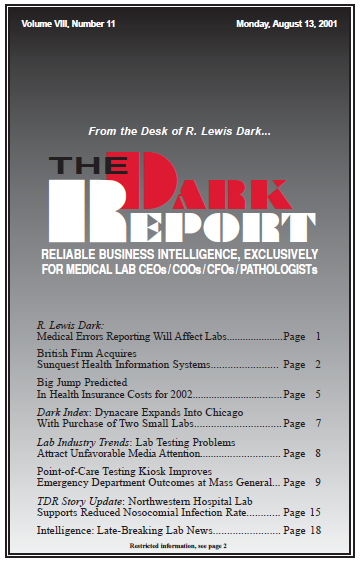CEO SUMMARY: Spiraling health costs are about to become a headline issue once again. There is widespread evidence that health insurers are seeking premium increases of 20% from the nation’s biggest employers. Aetna recently announced a second quarter 2001 operating loss of $95.9 million. Increased utilization was a major factor in this loss. Labs may […]
To access this post, you must purchase The Dark Report.


